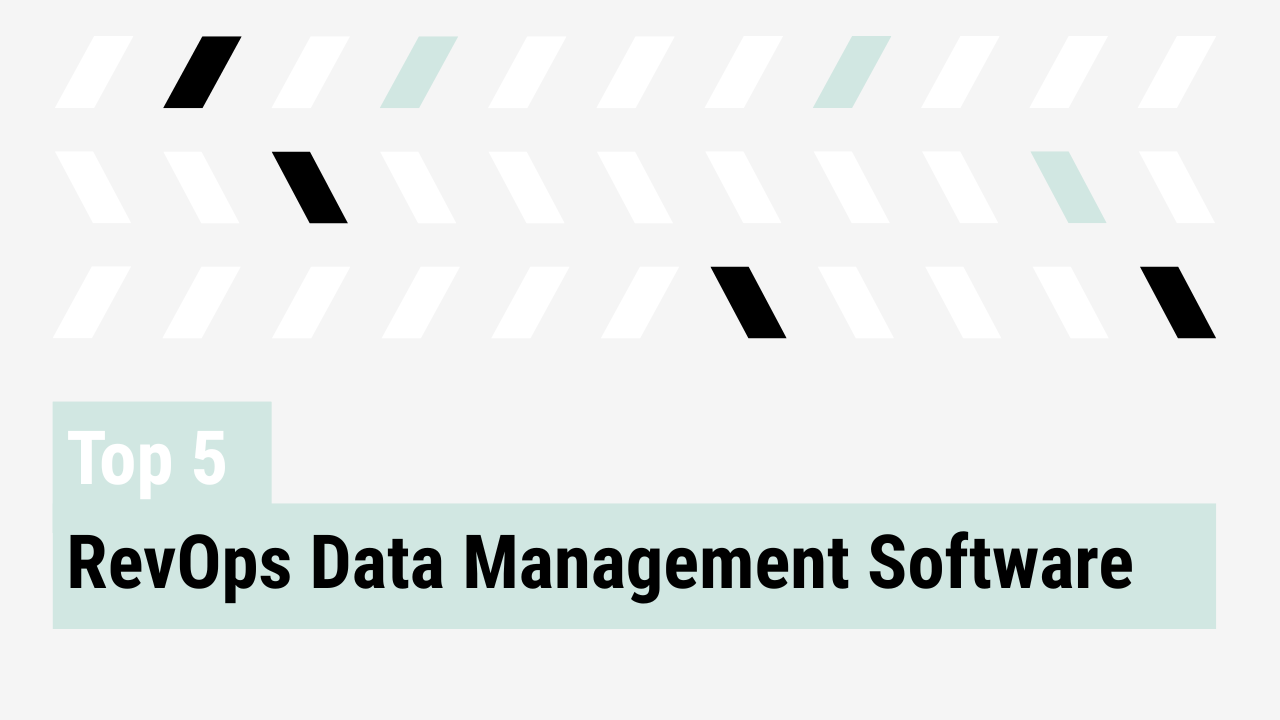RevOps is growing fast, but most organizations are still early in the journey. Only 6% of software and tech companies operate at a scaling, systemized level (Accenture). The rest are still developing.
For RevOps and GTM leaders who want to influence the C-suite, a RevOps capability matrix is a foundational asset. It helps align priorities, sequence improvements, and communicate maturity in terms that matter to the executive team.
It also drives results. According to Gartner, organizations with advanced RevOps maturity are twice as likely to exceed revenue goals and 2.3x more likely to beat profit targets.
This post lays out how to evaluate your maturity across four foundational capabilities: data, process, systems, and org design.
Data: from scattered to strategic
Data maturity depends on discipline and infrastructure. In 2024, 43% of RevOps leaders named data hygiene as a top priority. That’s no surprise. When teams work from incomplete or inconsistent data, their decisions suffer.
Mosaic saw the upside. By prioritizing signal consolidation and surfacing only key data points, they improved data quality by 35%, saved SDRs 1–2 hours per day, and lifted opportunity creation by 23%.
As Ryan Milligan said,
“If you have bad data, you don’t have anything telling you what to do… You need a really strong data infrastructure to say, here’s what’s real.”
How to build data maturity:
- Define what “clean” data looks like for your GTM motion
- Standardize key fields across systems (lead source, stage, segment)
- Use automated deduplication and enrichment tools
- Align with marketing and CS on shared data definitions
- Conduct quarterly data audits and share scorecards with stakeholders
Process: tuning the GTM engine
RevOps maturity often shows up in the seams. It surfaces between handoffs, systems, and functions. Yet, according to LeanData, 46% of companies still report that first sales activity on a new lead happens in hours, not minutes. For 38%, it takes more than two weeks to convert a lead into an opportunity.
Operational improvements include enforcing SLAs, monitoring funnel health, and aligning on full-lifecycle process design.
One AccountAim customer reduced territory deep-dive time from two weeks to two hours by shifting from manual exports to structured, back-tested dashboards.
Varicent’s maturity model, which focuses on SLAs, ownership, and funnel visibility, can help define and prioritize process improvements.
How to improve process maturity:
- Establish time-based SLAs for each handoff (lead to rep, rep to opp)
- Document buyer journey stages with clear internal owners
- Run quarterly funnel diagnostics to identify drop-off points
- Build lifecycle dashboards that span from MQL to closed-won
- Include CS and Marketing Ops in process reviews along with Sales
Systems: integration over accumulation
Many RevOps teams have too many tools and not enough alignment.
Winning by Design advocates for a common operating layer across marketing, sales, and customer success. That means shared frameworks, shared metrics, and shared visibility.
Simple fixes can make a difference. Scheduling automation, for example, is only used by 60% of teams, but 93% of those say it reduces friction.
As Adam Beebe said,
“Is your CRM in order? Can end users do their job without pinging you? Can you answer board-level reporting questions? That’s the basal foundation.”
How to improve systems maturity:
- Map your current RevTech stack and identify overlapping tools
- Set system-of-record for each core GTM metric
- Eliminate manual reporting by automating pipeline snapshots
- Invest in integration tools or middleware for smoother data flow
- Enable end users to self-serve common reporting and insights
Org design: structure follows strategy
A high-functioning RevOps org has clear ownership, aligned priorities, and cross-functional trust.
Budget and resourcing remain a constraint. According to LeanData, 43% of teams have no dedicated RevOps budget. One in four is a team of one.
Effective org design depends on clarity and operating rhythm.
How to strengthen org design:
- Document RevOps responsibilities across strategy, systems, and execution
- Define team scope by complexity of GTM motion (go beyond revenue size)
- Build a quarterly operating cadence with Sales, Marketing, CS, and Finance
- Create career paths for RevOps ICs and leaders
- Allocate time for proactive work
Capability means credibility
A RevOps capability matrix helps RevOps leaders measure what matters and map it to business outcomes. It turns gut feel into structured progress.
It also gives you language to communicate with executives, showing how maturity in data, process, systems, and org design translates to revenue predictability, funnel efficiency, and better decisions.
Jared Barol put it simply,
“You need to be able to forecast your business. You need to be able to drive, track, and measure the impact of demand… and there’s a set of derivatives that come out of each.”
To lead RevOps at a strategic level, build and strengthen the capabilities that support your outcomes.
Bonus: RevOps Capability Matrix Template
| Capability | Level 1: Developing | Level 2: Emerging | Level 3: Defined | Level 4: Integrated | Level 5: Strategic |
| Data | Siloed, inconsistent | Partial standardization | Centralized CRM | Cross-functional SSoT | Governed, real-time insights |
| Process | Ad hoc, undocumented | Basic SLAs in place | Documented funnel stages | Lifecycle tracking + SLAs | Automated, outcome-driven |
| Systems | Disconnected point tools | Manual reporting | Core RevTech stack aligned | Integrated systems + dashboards | Shared OS with user autonomy |
| Org Design | No dedicated RevOps | One-person RevOps | Defined RevOps responsibilities | Cross-functional operating cadence | Strategic function with budget and career paths |



